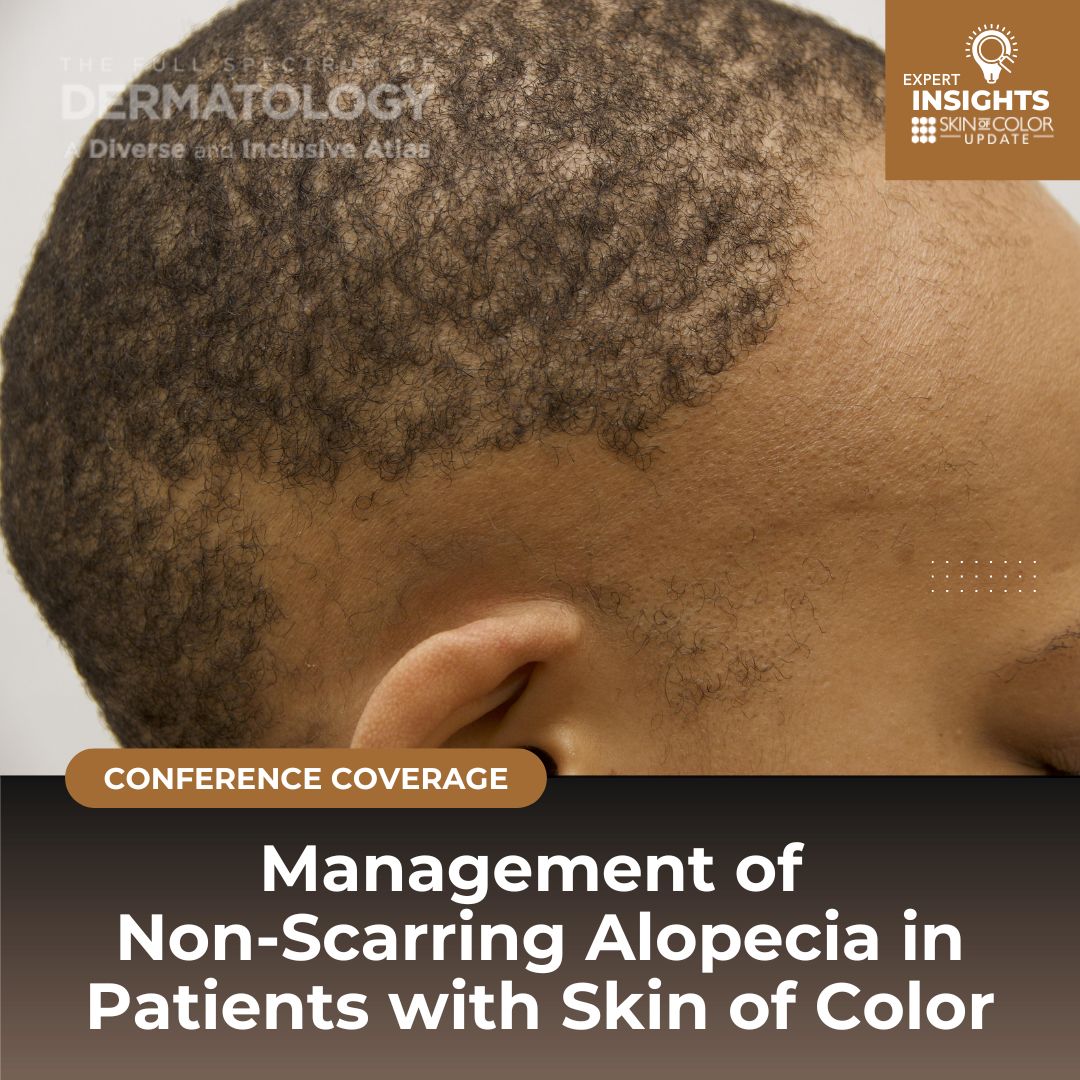Management of Non-Scarring Alopecia in Patients with Skin of Color
 Delivering effective dermatologic care for patients with skin of color requires a deep understanding of their unique needs. In her presentation at the Skin of Color Update, Dr. Amy McMichael, professor in the Department of Dermatology at Wake Forest School of Medicine, shared practical insights on managing non-scarring alopecia, emphasizing the importance of considering both biological and cultura …
Delivering effective dermatologic care for patients with skin of color requires a deep understanding of their unique needs. In her presentation at the Skin of Color Update, Dr. Amy McMichael, professor in the Department of Dermatology at Wake Forest School of Medicine, shared practical insights on managing non-scarring alopecia, emphasizing the importance of considering both biological and cultura …
 Delivering effective dermatologic care for patients with skin of color requires a deep understanding of their unique needs. In her presentation at the Skin of Color Update, Dr. Amy McMichael, professor in the Department of Dermatology at Wake Forest School of Medicine, shared practical insights on managing non-scarring alopecia, emphasizing the importance of considering both biological and cultura …
Delivering effective dermatologic care for patients with skin of color requires a deep understanding of their unique needs. In her presentation at the Skin of Color Update, Dr. Amy McMichael, professor in the Department of Dermatology at Wake Forest School of Medicine, shared practical insights on managing non-scarring alopecia, emphasizing the importance of considering both biological and cultura … Continue reading "Management of Non-Scarring Alopecia in Patients with Skin of Color"


 As 2024 comes to a close, the Journal of Drugs in Dermatology delivers a stellar lineup of research, reviews, and insights to inform your practice and inspire your curiosity. This month's Editor's Picks feature cutting-edge studies and expert commentary on a range of topics, from advanced acne treatments to groundbreaking leadership initiatives in dermatology.
Laser and Energy Treatments for Ac …
As 2024 comes to a close, the Journal of Drugs in Dermatology delivers a stellar lineup of research, reviews, and insights to inform your practice and inspire your curiosity. This month's Editor's Picks feature cutting-edge studies and expert commentary on a range of topics, from advanced acne treatments to groundbreaking leadership initiatives in dermatology.
Laser and Energy Treatments for Ac …  Media attention about oral minoxidil has impacted access to the hair loss drug in the Washington, D.C. area, according to a study published in the January issue of the Journal of Drugs in Dermatology. Researchers found shortages of the drug in D.C.-area pharmacies more than a year after an article about the treatment appeared in The New York Times.
To find out more about oral minoxidil access, …
Media attention about oral minoxidil has impacted access to the hair loss drug in the Washington, D.C. area, according to a study published in the January issue of the Journal of Drugs in Dermatology. Researchers found shortages of the drug in D.C.-area pharmacies more than a year after an article about the treatment appeared in The New York Times.
To find out more about oral minoxidil access, …  JDD authors Hannah Polster MD, Karen Kagha MD, and Janiene Luke MD report a case of platelet rich plasma for the treatment of scarring alopecia due to discoid lupus erythematosus.
Platelet-rich plasma (PRP) is an autologous concentration of plasma from a patient's blood containing platelets up to 7 times higher than normal plasma.1 Originally indicated to improve connective tissue regeneratio …
JDD authors Hannah Polster MD, Karen Kagha MD, and Janiene Luke MD report a case of platelet rich plasma for the treatment of scarring alopecia due to discoid lupus erythematosus.
Platelet-rich plasma (PRP) is an autologous concentration of plasma from a patient's blood containing platelets up to 7 times higher than normal plasma.1 Originally indicated to improve connective tissue regeneratio …  Central centrifugal cicatricial alopecia (CCCA) and frontal fibrosing alopecia are two very common hair diseases in our skin of color patients. Often these conditions are challenging to diagnose and even more problematic to treat and control. Expert Dr. Valerie Callender spoke during the Skin of Color Seminar Series (now Skin of Color Update https://skinofcolorupdate.com)in New York City on May 5t …
Central centrifugal cicatricial alopecia (CCCA) and frontal fibrosing alopecia are two very common hair diseases in our skin of color patients. Often these conditions are challenging to diagnose and even more problematic to treat and control. Expert Dr. Valerie Callender spoke during the Skin of Color Seminar Series (now Skin of Color Update https://skinofcolorupdate.com)in New York City on May 5t …